Estrogen receptor-α and estrogen receptor-β in the uterine vascular endothelium during pregnancy: functional implications for regulating uterine blood flow
- PMID: 22271294
- PMCID: PMC3674511
- DOI: 10.1055/s-0031-1299597
Estrogen receptor-α and estrogen receptor-β in the uterine vascular endothelium during pregnancy: functional implications for regulating uterine blood flow
Abstract
The steroid hormone estrogen and its classical estrogen receptors (ERs), ER-α and ER-β, have been shown to be partly responsible for the short- and long-term uterine endothelial adaptations during pregnancy. The ER-subtype molecular and structural differences coupled with the differential effects of estrogen in target cells and tissues suggest a substantial functional heterogeneity of the ERs in estrogen signaling. In this review we discuss (1) the role of estrogen and ERs in cardiovascular adaptations during pregnancy, (2) in vivo and in vitro expression of ERs in uterine artery endothelium during the ovarian cycle and pregnancy, contrasting reproductive and nonreproductive arterial endothelia, (3) the structural basis for functional diversity of the ERs and estrogen subtype selectivity, (4) the role of estrogen and ERs on genomic responses of uterine artery endothelial cells, and (5) the role of estrogen and ERs on nongenomic responses in uterine artery endothelia. These topics integrate current knowledge of this very rapidly expanding scientific field with diverse interpretations and hypotheses regarding the estrogenic effects that are mediated by either or both ERs and their relationship with vasodilatory and angiogenic vascular adaptations required for modulating the dramatic physiological rises in uteroplacental perfusion observed during normal pregnancy.
Thieme Medical Publishers 333 Seventh Avenue, New York, NY 10001, USA.
Figures
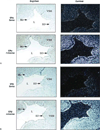
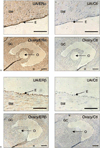

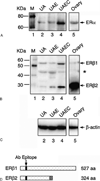
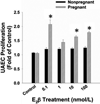

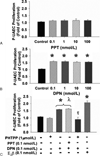


Similar articles
-
[Regulation of uterine blood flow. I. Functions of estrogen and estrogen receptor α/β in the uterine vascular endothelium during pregnancy].Rev Chil Obstet Ginecol. 2014;79(2):129-139. doi: 10.4067/S0717-75262014000200011. Rev Chil Obstet Ginecol. 2014. PMID: 26113750 Free PMC article. Spanish.
-
Estradiol-17β and its cytochrome P450- and catechol-O-methyltransferase-derived metabolites selectively stimulate production of prostacyclin in uterine artery endothelial cells: role of estrogen receptor-α versus estrogen receptor-β.Hypertension. 2013 Feb;61(2):509-18. doi: 10.1161/HYPERTENSIONAHA.112.200717. Epub 2013 Jan 14. Hypertension. 2013. PMID: 23319543 Free PMC article.
-
Identification of Differential ER-Alpha Versus ER-Beta Mediated Activation of eNOS in Ovine Uterine Artery Endothelial Cells.Biol Reprod. 2016 Jun;94(6):139. doi: 10.1095/biolreprod.115.137554. Epub 2016 May 11. Biol Reprod. 2016. PMID: 27170438 Free PMC article.
-
Estrogen Receptors and Estrogen-Induced Uterine Vasodilation in Pregnancy.Int J Mol Sci. 2020 Jun 18;21(12):4349. doi: 10.3390/ijms21124349. Int J Mol Sci. 2020. PMID: 32570961 Free PMC article. Review.
-
Estrogen Receptor Function: Impact on the Human Endometrium.Front Endocrinol (Lausanne). 2022 Feb 28;13:827724. doi: 10.3389/fendo.2022.827724. eCollection 2022. Front Endocrinol (Lausanne). 2022. PMID: 35295981 Free PMC article. Review.
Cited by
-
Structural analysis of estrogen receptors: interaction between estrogen receptors and cav-1 within the caveolae†.Biol Reprod. 2019 Feb 1;100(2):495-504. doi: 10.1093/biolre/ioy188. Biol Reprod. 2019. PMID: 30137221 Free PMC article.
-
G-Protein-Coupled Estrogen Receptor Expression in Rat Uterine Artery Is Increased by Pregnancy and Induces Dilation in a Ca2+ and ERK1/2 Dependent Manner.Int J Mol Sci. 2022 May 26;23(11):5996. doi: 10.3390/ijms23115996. Int J Mol Sci. 2022. PMID: 35682675 Free PMC article.
-
Estradiol and Estrogen-like Alternative Therapies in Use: The Importance of the Selective and Non-Classical Actions.Biomedicines. 2022 Apr 6;10(4):861. doi: 10.3390/biomedicines10040861. Biomedicines. 2022. PMID: 35453610 Free PMC article. Review.
-
Local effects of pregnancy on connexin proteins that mediate Ca2+-associated uterine endothelial NO synthesis.Hypertension. 2014 Mar;63(3):589-94. doi: 10.1161/HYPERTENSIONAHA.113.01171. Epub 2013 Dec 23. Hypertension. 2014. PMID: 24366080 Free PMC article.
-
Influence of Estrogens on Uterine Vascular Adaptation in Normal and Preeclamptic Pregnancies.Int J Mol Sci. 2020 Apr 8;21(7):2592. doi: 10.3390/ijms21072592. Int J Mol Sci. 2020. PMID: 32276444 Free PMC article. Review.
References
-
- Meyers MJ, Sun J, Carlson KE, Marriner GA, Katzenellenbogen BS, Katzenellenbogen JA. Estrogen receptor-beta potency-selective ligands: structure-activity relationship studies of diarylpropionitriles and their acetylene and polar analogues. J Med Chem. 2001;44(24):4230–4251. - PubMed
-
- Mendelsohn ME, Karas RH. The protective effects of estrogen on the cardiovascular system. N Engl J Med. 1999;340(23):1801–1811. - PubMed
-
- Chambliss KL, Yuhanna IS, Mineo C, et al. Estrogen receptor alpha and endothelial nitric oxide synthase are organized into a functional signaling module in caveolae. Circ Res. 2000;87(11):E44–E52. - PubMed
-
- Chen DB, Bird IM, Zheng J, Magness RR. Membrane estrogen receptor-dependent extracellular signal-regulated kinase pathway mediates acute activation of endothelial nitric oxide synthase by estrogen in uterine artery endothelial cells. Endocrinology. 2004;145(1):113–125. - PubMed
Publication types
MeSH terms
Substances
Grants and funding
- R01 HL049210/HL/NHLBI NIH HHS/United States
- K99 AA019446/AA/NIAAA NIH HHS/United States
- HL89144/HL/NHLBI NIH HHS/United States
- HD38843/HD/NICHD NIH HHS/United States
- T32 HD041921/HD/NICHD NIH HHS/United States
- R01 HL087144/HL/NHLBI NIH HHS/United States
- P01 HD038843/HD/NICHD NIH HHS/United States
- R00 AA019446/AA/NIAAA NIH HHS/United States
- R25 GM083252/GM/NIGMS NIH HHS/United States
- HL49210/HL/NHLBI NIH HHS/United States
- R25-GM083252/GM/NIGMS NIH HHS/United States
- AA19446/AA/NIAAA NIH HHS/United States
- T32-HD041921-07/HD/NICHD NIH HHS/United States
LinkOut - more resources
Full Text Sources
Medical
Miscellaneous

